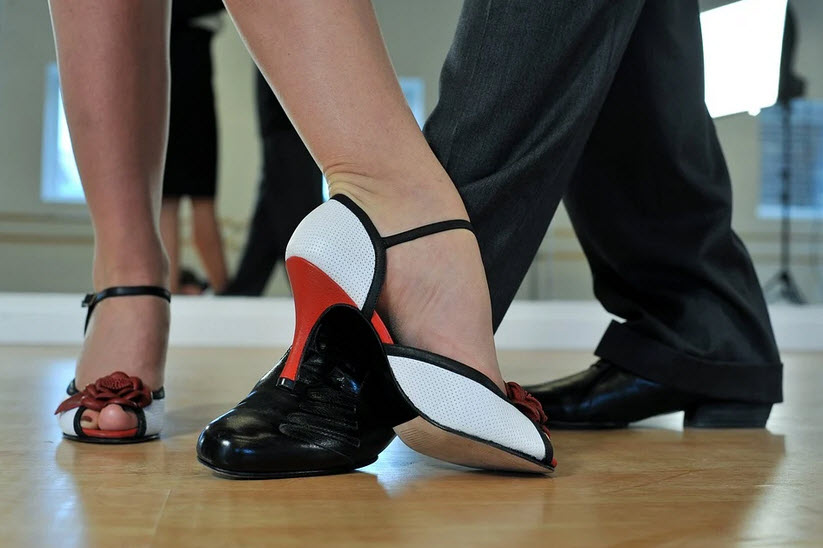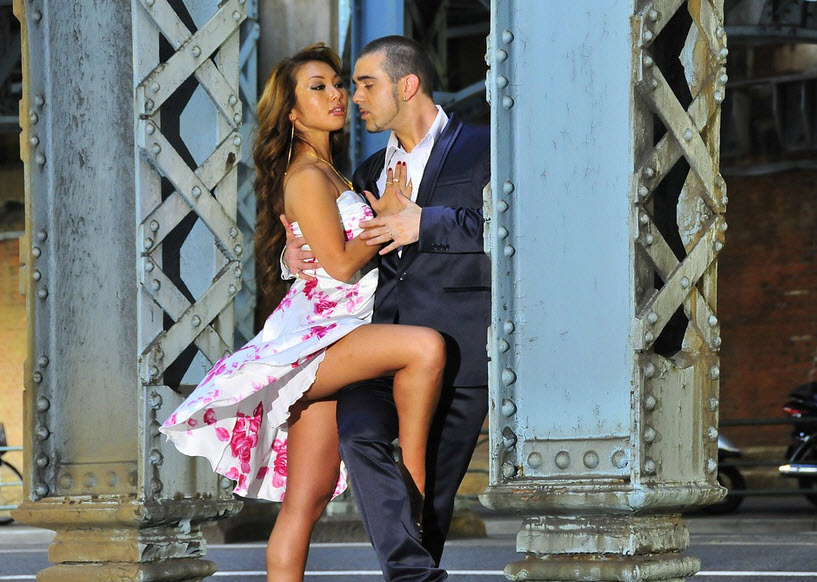
Dancing Argentine tango
Argentine tango is a social dance that developed in working-class areas of Buenos Aires and Montevideo in the late 1800s. Over time, a lot of different styles and elements developed, and the dance spread from Argentina to the rest of the world.
The United Kingdom was swept by a tango craze in the 1990s in response to the immensely popular international touring shows “Tango Argentino” and “Forever Tango”. A tango dance hall – known as a Tango Milonga – was established in London, at The London Welsh Center at 157 Grays Inn Road. The interest in tango, and especially Argentine tango, then spread from London to the rest of the UK.
Dancing Argentine tango
Arentine tango is danced in an embrace that can be anywhere from very open (at arms length) to very closed (chest-to-chest).
In most situations, both members of the couple will keep their feet close to the floor and “walk” their way around the dancefloor.
Legs are kept fairly close, allowing for ankles and knees to brush as one leg passes the other.
The follower is typically led to alternate feet, and will rarely have their weight on both feet at the same time.
How the couples move on the dancefloor
Argentine tango is danced counterclockwise around the outside of the dancefloor.
Cutting across the middle of the floor is considered bad.
It is okay for a couple to stop for a short while to perform stationary figures, but not if it unduly impedes the other dancers. Each couple is expected to respect the other couples on the floor and pay attention to their surroundings, to prevent problems such as blocking, crowding and colliding.
Emotion
A very important aspect of Argentine tango is to always be in tune with the emotion currently expressed by the music and dance accordingly.
A good dancer will not only feel this emotion but also transmit it to their partner.
Basico
Improvisation is an important element in Argentine tango, but when you start to learn your dance teacher will teach you certain patterns known as basico – the basic step. Once you are familiar with the basics, you and your partner can start playing around more with improvisations.

Music
Compared to the music used for ballroom tango, Argentine tango music is much more varied and has evolved a lot in various ways over the years, picking up influences from many different places.
The lyrics tend to be highly emotional and nostalgic, and a bulk of the songs are about lost love.
A typical Argentine tango orchestra will include several melodic instruments. The bandoneon, a small button accordion, is a staple.
The four major schools of Argentine tango music are:
- Di Sarli
- d´Arienzo
- Troilo
- Pugliese
Códigos and yeta
Over time, the Argentine tango has developed its own set of codes (códigos) and superstitions (yetas). Exactly how strictly these are adhered to will vary from one dance hall to the next.
Exampels of a yeta
It is considered bad luck to dance to the tango “Adiós Muchachos”. This superstition arose fom the false belief that Carlos Gardel sang this song before the plane crash that killed him.
Examples of códigos
- Invitation to danceInvitation to dance is done during a cortina or early in the tanda. It is done discretely by “cabeco”, where one dancer nods their head and eye contact is established.
- Dance the full tanda with the same partnerArgentine tango is dance in sets of songs called tandas. Each tanda consists of three or four songs. If you accept an invitation to dance, you accept to dance the full tanda with that partner.
- Do not dance more than one tanda with the same partnerDancing more than one tanda with one partner is avoided, since it is seen as flirtatious behaviour. In situations where there are not many dance partners available, this rule becomes less relevant.
- How can I know that the tenda is over?A tenda consists of three or four songs, and is followed by a cortina. The cortina is a non-tango song that lasts for a minute or so and signals that the tenda is over.
- Don´t dance to the cortinaDuring the cortina, dancers return to their seats and rest.
- Stay silent during the danceDo not talk while dancing. Small talk is done between songs, during the cortina or when you are sitting out a song and not dancing to it.